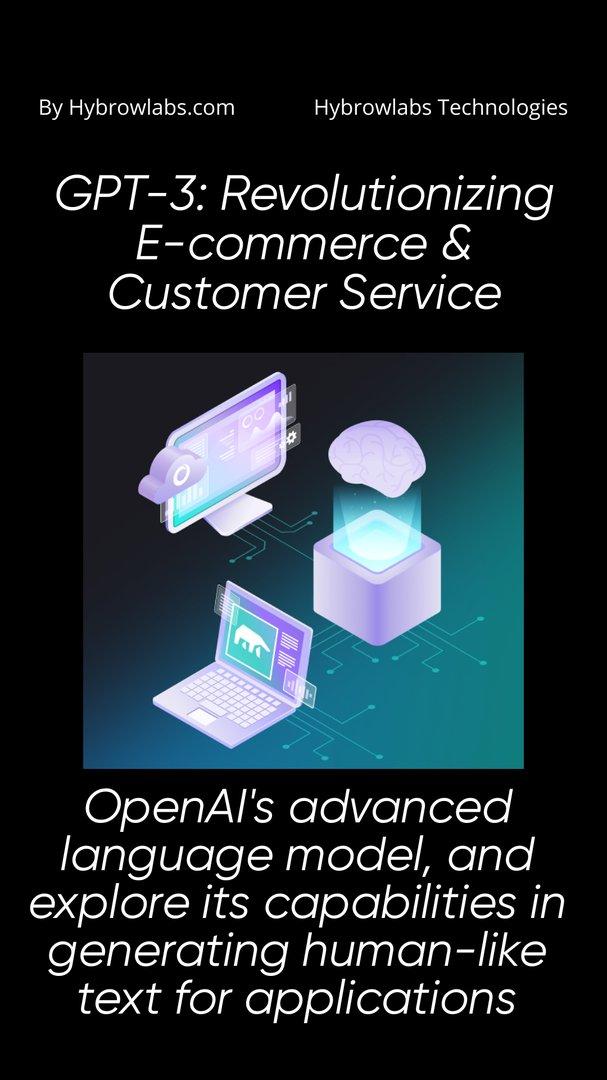
For many people, online shopping has become a way of life, but it is not always a pleasant experience. Customers that receive slow or unresponsive customer service may become frustrated and disappointed. As e-commerce expands, firms must find innovative ways to improve customer service while meeting their customers' ever-increasing needs. This is where GPT-3 comes into play. This innovative language model has the potential to transform the retail industry by enabling firms to create excellent customer experiences via chatbots. In this post, we'll look at how GPT-3 is altering e-commerce and the benefits it may provide to companies trying to improve their customer service.
I am sure you heard about GPT-3, but lets have a quick look at what it is :
The language model GPT-3, or Generative Pre-trained Transformer 3, was created by OpenAI. It generates writing that is human-like using deep learning algorithms and is capable of performing a variety of language-related activities, including question-answering, content production, and language translation. GPT-3 has received recognition for its aptitude to comprehend natural language and generate excellent writing, making it an effective tool for companies trying to enhance client engagement.
How GPT-3 Can Make Your E-commerce Store Smarter and More User-Friendly?
1. Personalized product recommendations:
- Benefits for customers: By giving clients a more specialized range of goods that suit their unique needs and tastes, personalized recommendations from GPT-3 can improve their shopping experience. Customers may end up saving time as a result and feeling more satisfied with their whole purchasing experience.
- Benefits for retailers: Personalized product recommendations for retailers can result in higher revenue and sales as well as better consumer engagement and retention. Retailers can encourage repeat business and customer loyalty by making relevant and customized product recommendations to their clients. Retailers can also acquire important insights into the tastes and wants of their customers by examining customer data and behavior. These insights can be used to improve marketing strategies and boost overall business performance.
2. Enhanced customer service:
- Chatbots: GPT-3-powered chatbots can be a useful tool for e-commerce companies looking to improve customer care. Chatbots can offer personal assistance, timely response, 24/7 support to clients because of their capacity to understand and interpret user inquiries. By doing this, it may be possible to manage complex requests, shorten response times, and raise customer satisfaction levels. GPT-3 may be trained to recognise specific consumers and offer suitable assistance based on their purchase histories and browsing habits, giving them a more interesting and tailored shopping experience.
- Voice assistants: GPT-3-enabled voice assistants can also be an effective tool for improving customer support in e-commerce companies. Voice assistants are able to handle purchases as well as offer customized search results and recommendations by utilizing their natural language processing abilities. Customers' total buying experience might be greatly enhanced by doing this, making it more convenient, effective, and rewarding. Voice assistants powered by GPT-3 can deliver a seamless and intuitive experience for customers thanks to its capacity to recognize unique voices and preferences. This raises customer satisfaction levels, which in turn increases sales for the company.
3. Improved product descriptions:
- Benefits for customers: Customers and retailers in e-commerce enterprises can both benefit from enhanced product descriptions enabled by GPT-3. By accurately conveying information about features and benefits, thorough and informative product descriptions can assist buyers in making knowledgeable purchasing decisions. This can lower the likelihood of returns and raise general levels of satisfaction. Also, customers can gain from more interesting and customized product descriptions, which will enhance and personalize their buying experience.
- Benefits for retailers: By giving more precise and in-depth information, updated product descriptions can aid businesses in boosting conversion rates. Sales and revenue may rise as a result, while the possibility of returns brought on by unrealistic expectations may decline. Retailers can also use GPT-3 to develop distinctive and different product descriptions that will help their goods stand out from the competition and boost customer loyalty and brand recognition.
4. Marketing and Advertising:
- Improving ad copy with GPT-3: GPT-3 can be used to create numerous types of headlines and ad content while optimizing them for various target markets and selection criteria. By doing this, advertisers may create more effective ad copy with less time and effort and see an improvement in their commercials' overall effectiveness.
- GPT-3 and social media marketing: By creating social media posts that are interesting and useful to the target audience, GPT-3 can also help with social media marketing initiatives. GPT-3 can create posts that are more likely to be shared and interacted with by studying the interests and preferences of the target audience. This helps businesses develop their brands and broaden their social media reach.
Overall, GPT-3 has the potential to revolutionize e-commerce by enabling retailers to provide personalized, high-quality customer experiences.
Exploring the obstacles of GPT-3 in E-commerce: What holds it back?
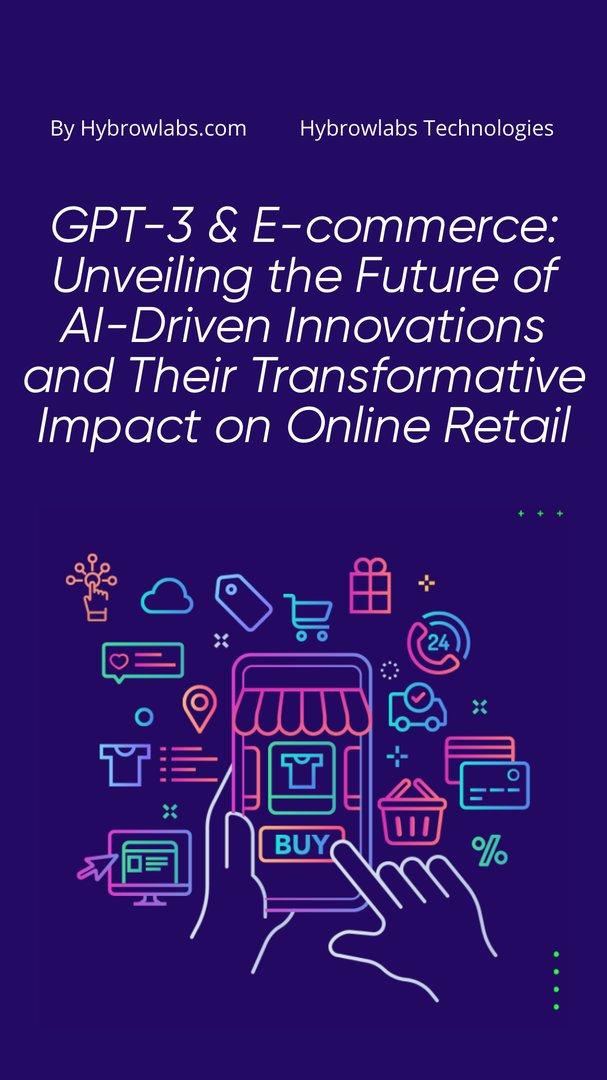
1. Accuracy and bias concerns:
The level of the training data that GPT-3 uses determines how accurate it is in e-commerce, which raises bias questions. Data selection, processing, and algorithmic recommendations can all lead to biases. By giving specific customer groups unfair recommendations or promotions, these biases could negatively impact the outcomes of e-commerce. The training data utilized for GPT-3 must be inclusive and reflect a different consumer base in order to be effective.
2. Integration challenges:
It can be difficult to integrate GPT-3 with e-commerce platforms because of its complicated architecture and API restrictions. The integration calls for a significant investment of time, money, and resources. In addition, combining GPT-3's APIs with e-commerce platforms may cause system crashes or poor response times because they are not always dependable. To prevent errors and inconsistencies, it is also essential to make sure that the GPT-3 is integrated with current e-commerce systems, such as the inventory management and customer relationship management systems.
3. Limitation in handling NLP:
Although GPT-3 is a fantastic tool for tasks involving natural language processing, there are a few drawbacks that could prevent it from being used in e-commerce. GPT-3's failure to recognize emotions, recognize nonverbal signs, grasp context or sarcasm, or interpret context can cause incorrect responses to customer enquiries. The ability of GPT-3 to produce writing that appears human could also increase the danger of fraud. The lack of common sense and reasoning skills in GPT-3 could potentially result in responses that make no sense, demanding a lot of human interaction to guarantee correct e-commerce outcomes.
GPT-3 and E-commerce: A Look into Future Developments and Possibilities:
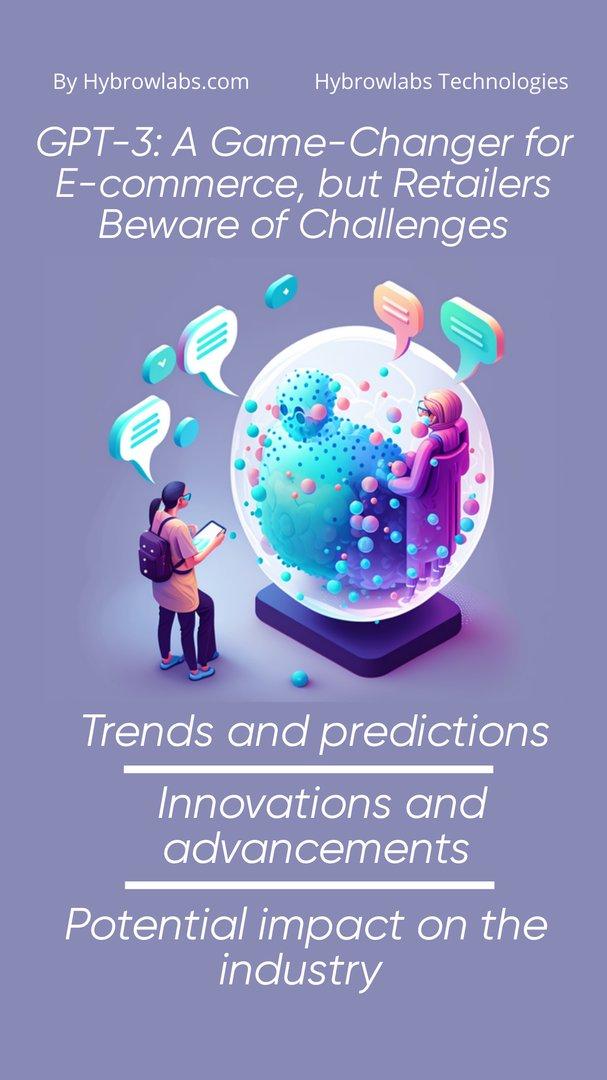
1. Trends and predictions:
The trends and expectations for GPT-3's future in e-commerce are highly positive.
- The usage of GPT-3 for personalized product suggestions based on consumer browsing behavior and purchase history is one of the most significant trends.
- GPT-3 can also be used in chatbots and virtual assistants to assist clients with questions and provide more personalized support.
- GPT-3 can also help with content creation, such as product descriptions and blog postings. Its ability to evaluate data sets can be used to detect and prevent fraud, thereby protecting e-commerce platforms and their customers. Ultimately, GPT-3 has the potential to transform the e-commerce business and enhance the customer experience.
2. Innovations and advancements:
GPT-3 technology innovations and advances are expected to improve its usage in e-commerce.
- GPT-3 can learn and adapt to better understand client enquiries and give more accurate responses in one area of development: chatbots and virtual assistants.
- To offer a more immersive purchasing experience, GPT-3 can be combined with augmented and virtual reality technology.
- GPT-3 can also be used to create virtual shopping assistants that guide clients through the purchasing experience. GPT-3 technology has the ability to alter e-commerce and increase customer interactions with online shops as it advances.
3. Potential impact on the industry:
GPT-3 has the potential to have a huge impact on the e-commerce business.
- As technology advances, merchants will be able to boost customer interaction and create a more personalized purchasing experience.
- GPT-3 can save retailers time and resources while preserving consistency and accuracy because to its capacity to generate high-quality content at scale.
- The usage of GPT-3 for chatbots and virtual assistants can lessen the strain of customer care staff, and its data analytic skills can be utilised to detect and prevent fraud. Retailers can gain a competitive advantage by offering a more efficient and personalized shopping experience, which can lead to higher consumer loyalty and sales.
Conclusion:

In conclusion, GPT-3 offers e-commerce a wide range of advantages, including specialized recommendations, enhanced user experiences, and increased sales. With its natural language processing abilities, GPT-3 can improve customer service chatbots and product description creation, among other things.
Going ahead, GPT-3 has the possibility of shaking up the e-commerce sector by providing clients with more precise and customized product recommendations and improving the purchasing process.
Retailers thinking about using GPT-3 should be aware of its shortcomings, such as issues with accuracy and bias, difficulties integrating, and the necessity for human intervention to ensure correct results. Notwithstanding these difficulties, companies looking to improve their online presence and consumer experiences should consider investing in GPT-3 because of the potential benefits it has for e-commerce. For professional assistance in implementing GPT-3 technology in e-commerce, consider using the Hybrowlabs Development Service.
GPT-3 is an innovative technology that has the potential to revolutionize how retailers conduct online business. Retailers should carefully examine the deployment of new technology as it develops to provide accurate and unbiased results for their customers
FAQ’s
Why is GPT-3 used in e-commerce and what does it do?
In order to produce writing that resembles human speech, OpenAI developed the GPT-3 language generation model. By analyzing vast volumes of data and producing precise and thorough information, GPT-3 can be utilized in e-commerce to improve product descriptions, personalize recommendations, and improve customer support.
2. How can GPT-3 enhance online customer service?
GPT-3 can enhance customer service in e-commerce by offering individualized assistance, prompt responses, and round-the-clock assistance via chatbots and voice assistants. This can manage complex requests, speed up response times, and increase customer satisfaction.
3. What are the advantages of utilizing GPT-3 for e-commerce product descriptions?
By accurately conveying details about features and benefits, improved product descriptions enabled by GPT-3 can assist buyers in making wise purchasing decisions. This can lower the likelihood of returns and raise general levels of satisfaction. For merchants, better product descriptions can boost sales, cut returns, and set their goods apart from those of rivals.
4. How can GPT-3 produce tailored recommendations for customers who shop online?
GPT-3 may evaluate client information, including surfing habits and purchase histories, to produce tailored product recommendations. This may result in higher customer satisfaction scores and, eventually, higher sales for the company.
5. What are some potential drawbacks of using GPT-3 in e-commerce?
One potential drawback of using GPT-3 in e-commerce is the cost associated with implementing and maintaining the technology. Additionally, GPT-3 may not be able to fully understand the nuances of customer queries, leading to inaccurate or irrelevant responses. It's important to carefully consider the benefits and drawbacks before implementing GPT-3 in an e-commerce business.



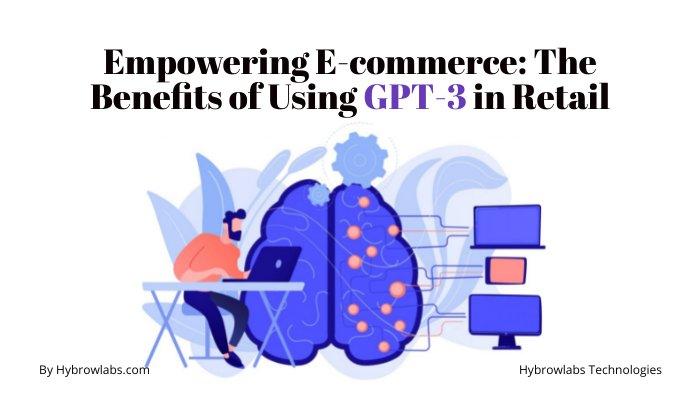


a3dc85.jpg)

.jpg)
fd8f11.png)

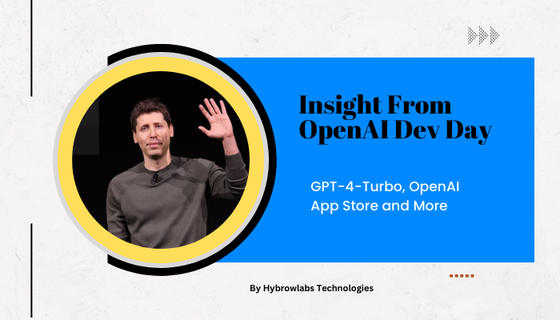
.jpg)
.jpg)